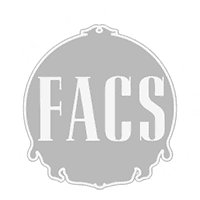Chemical Peels
Newport Beach
Uncover Your Glowing Skin
Underneath the Damage







If you’re born with clear, normal skin, you’re one of the lucky few. Indeed, getting clear skin is an everyday challenge preventing many people from enjoying youthful, healthy, and glowing skin.
And while there are many cosmetic products in the market promising to be the best skin care solution for clear and radiant skin, not all of them work for various skin types and situations.
If you’ve been looking for ways to give your damaged skin a new lease on life, then getting a chemical peel might be the solution you’re looking for.
Chemical peels treat skin damage brought about by sun exposure, acne, clogged pores, and scarring. It can also combat signs of aging that leave your skin with fine lines, uneven skin tone, and a dull complexion.
Keep reading to learn more about what chemical peels are, what they do for your skin, and how we can offer you the best deals in Southern California.
What are Chemical Peels?
A chemical peel is a procedure that involves applying a chemical solution to the skin to exfoliate and peel off its top layers. Doing so removes damaged skin cells, revealing healthier and smoother skin underneath.
Chemical peels can be applied to the face, hands, and neck to treat wrinkles, discolored skin, and scars. They can be performed alone or in combination with other cosmetic procedures done at different depths, from light to deep.
You may need to undergo the procedure more than once to get the desired results with a light or medium peel. But with deeper chemical peels, it may take longer for you to recover because they usually offer more dramatic results.
What are the Types of Chemical Peels You Can Get?
There are three types of chemical peels based on how deeply they exfoliate your skin:
Should You Get a Chemical Peel?
If you’re a person suffering from the following skin conditions, then you might want to consider getting a chemical peel:
- wrinkles and fine lines
- actinic keratosis (rough, scaly skin patches due to sun damage)
- acne marks
- sunspots and age spots
- freckles
- hyperpigmentation
- scars
- melasma (brown or gray patches on the skin)
- uneven skin tone or redness
How Are Chemical Peels Done?
A chemical peel is usually done at the doctor’s office or in an outpatient surgical facility.
Preparation and Anesthesia
Before the procedure, our aesthetician will instruct you to clean your face, tie your hair back, and cover your eyes with gauze or goggles.
Pain relief isn’t typically needed for a light chemical peel. If you’re having a medium peel, you might be given a sedative or painkiller.
For deep peels, our aesthetician will give you sedative or regional anesthesia to numb large treatment areas.
Peeling Process
During a light chemical peel, Dr. Agha uses a brush, cotton ball, gauze, or sponge to apply a chemical solution containing glycolic acid or salicylic acid to the treatment area. Your skin will start to whiten, and you may experience a slight tingling sensation.
Once complete, the chemical solution will be removed, and a neutralizing solution will be added.
In a medium chemical peel, Dr. Agha uses a cotton-tipped applicator or gauze to apply a chemical solution containing TCA, sometimes in combination with glycolic acid. The skin will begin to whiten.
After a few minutes, Dr. Agha applies a cold compress to soothe the treated skin. You might also be given a handheld fan to cool your skin.
Though no neutralizing solution is needed, you might feel a tingling and burning sensation for up to 20 minutes.
If you’re getting a deep chemical peel, you’ll first be sedated before Dr. Agha applies carbolic acid to your skin using a cotton-tipped applicator. Your skin will begin to turn white or gray.
To limit the skin exposure to the acid, he will do the procedure in 15-minute intervals. The entire process might take 90 minutes.
How Do You Recover from Chemical Peels?
Your recovery depends on the type of chemical peel you underwent. Our aesthetician will give you specific instructions on how to take care of your treated skin, like how often to wash your face and what moisturizer to use.
General Instructions
- Avoid sun exposure for several months after a chemical peel since your new skin will still be sensitive.
- Avoid using makeup or other cosmetics until our aesthetician allows you.
- For pain relief, apply ice packs for 20 minutes at a time. You may also use a fan to cool down your skin and help relieve discomfort.
What are the Results of Chemical Peels?
Depending on the type of chemical peel you got, you’ll enjoy…
- Improved skin texture and tone
- Reduced fine lines and wrinkles
- Smoother and younger-looking skin
- Increased confidence and self-esteem
What are the Risks and Side Effects?
Redness, scabbing, and swelling are three of the usual side effects of chemical peels. The redness may even last for a few months in medium or deep chemical peels.
But there are also rare but serious and permanent risks and complications, such as:
How Much Do Chemical Peels Cost?
According to the American Society of Plastic Surgeons, the current average cost of a chemical peel is $673, with a wide range of $150 to $3,000, depending on the type of chemical peel you’re getting.
Get Your Chemical Peels Done in Orange County
Board-certified plastic surgeon Dr. Agha offers these chemical peels in Southern California in addition to other cosmetic treatments that can help you achieve more vibrant and youthful skin.
